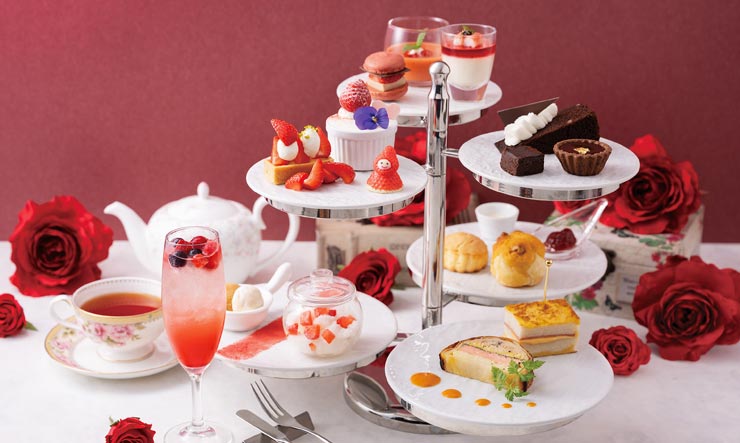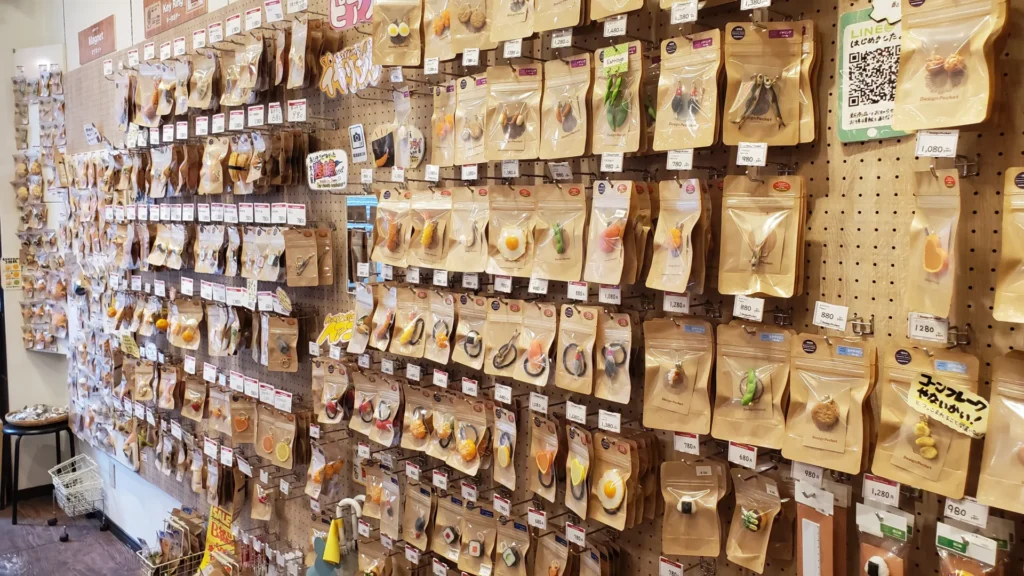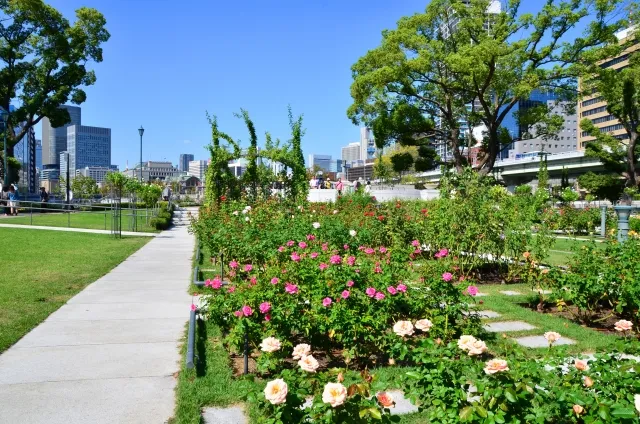大阪
從美食到購物,大阪特有的觀光樂趣應有盡有!
不妨前往主要車站附近享受一流的購物體驗,品嚐章魚燒和大阪燒等當地特色美食。
相關文章
-

修伯台展望台|從大阪池田站出發的步行指南
Satsukiyama 位於大阪市池田的中心。此山海拔約 315 公尺,是該地區的象徵地標。山頂上散佈著五個觀景點,它們都以迷人的夜景而聞名,令人印象深刻,因此被選入 「日本夜景 100 強」。從阪急池田車站徒步約 30 分鐘即可抵達。本指南涵蓋了您需要知道的一切,從如何前往首保台到附近的推薦景點。 <index> 1. 關於首保台所在地大阪市池田2.前往壽保台遠足前應帶備的物品和穿著 3.如何從大阪梅田前往阪急池田站 4.從阪急池田車站到首保台的徒步時間和路線 5. 如何享受首保台之旅 6.與首保台一同遊覽的池田其他觀光景點池田市位於大阪北部,交通便利,從大阪市中心的梅田車站搭乘阪急電車只需約 20 分鐘即可抵達。該市被稱為即食拉麵的發源地,是 CupNoodles 博物館的所在地,遊客可在此親手製作原創杯麵。池田還有池田城跡公園等歷史遺址。池田結合了飲食文化、歷史以及對日本現代化的洞察力,是希望探索大阪市中心以外地區的旅客的最佳目的地。請務必穿著舒適的運動鞋或步行鞋。這條路線需要從車站步行,其中還包括一些山路,因此不建議穿高跟鞋或涼鞋。視季節而定,請帶備適當的保暖衣物,以及補充水分的水。如果您打算欣賞夜景,攜帶小型手電筒會讓您安心不少。由於您將探索大自然,穿著舒適、易於穿著的衣服是最佳選擇。從大阪梅田出發,搭乘阪急電車。大阪梅田車站是主要的終點站,有前往神戶和京都的列車,但要到達池田車站 - 距離壽保台最近的車站 - 您必須從 4-6 號月台搭乘阪急寶塚線。搭乘 Rapid Express 需時約 18 分鐘,單程票價 280 日元。 如果您打算遊覽多個區域,阪急一日乘車券(1,300 日元)非常划算,可在一整天內不限次數搭乘所有阪急路線。〈數位車票〉阪急1 日乘車券 - 2025 年版 當您抵達阪急池田車站後,就可以前往壽保台。從車站唯一的檢票口出站,左轉,繼續直行,不要下樓梯或前方的扶手電梯。不久之後,您會看到一座行人天橋。穿過天橋,您就進入了 Sakaemachi 購物街。從這裡開始,就一直直走。即使在有蓋拱廊結束後,也要繼續向前直走。從車站出來大約 10 分鐘後,道路會逐漸變成斜坡。不久,您會到達一個岔路口,在這裡有一條樓梯和一條斜路分開。沿著"→Satsukiyama Park "的路牌,走左邊的樓梯就可以到達公園。樓梯相當陡峭,因此如果您想走較容易的路線,可以改走斜坡繞道繼續直行。從 Satsukiyama 公園開始,便是通往 Shubodai 的「Daimonji 路線」遠足步道。在大自然中愉快地步行 15 分鐘,您就會到達觀景台。從車站出發,全程約需 30 分鐘,但由於大部分路線都是上坡,因此最好稍事休息,以舒適的步伐前行。黃昏時分,也就是日落前後,壺台尤其美麗。柔和的天空顏色搭配城市的燈火,營造出美妙浪漫的氣氛。入夜之後,您將看到動感十足的夜景,包括池田City 的燈光和阪神Expressway 的燈光線。您可以一直看到大阪市中心,而觀景台下方就是伊丹機場,飛機起降的景象宛如電影一般神奇。壽保台是情侶尋找浪漫約會的熱門地點,這也不足為奇。春天,遊客還可在該地區欣賞櫻花。在通往壽保台的途中,您會看到 Satsukiyama 動物園 - 日本第二小的動物園。在這裡,您可以見到遊客們喜愛的可愛的袋熊。(自 2024 年 6 月起,該動物園因翻修工程而有限度地開放,需要通過抽籤系統提前預約)。動物園附近矗立著池田神社,它是池田市最古老的神社之一,也是與 「Orihime 傳說 」有關的地方。這是一個安靜的地方,您可以在這裡享受寧靜的參拜,同時感受這裡的歷史和浪漫。回到阪急池田Station 附近,您會發現一條熱鬧的傳統商店街。這裡是結束步行的最佳地點 - 享用一些當地美食、逛逛小店,或挑選一些紀念品帶回家。 ▼更多餐廳資訊▼大阪 CUPNOODLES MUSEUM 附近 3 家可以吃到植物性食物的餐廳池田池田,大阪的清真、素食和素菜名單以及體驗日本文化的推薦觀光景點! 本指南介紹如何前往大阪北部最受歡迎的觀光景點之一--壽保台,以及周圍地區的實用資訊。在此一邊欣賞日落美景,一邊欣賞夜景,一定會成為您旅途中最難忘的時刻之一。
-

在日本非常受歡迎!大阪附近4家草莓下午茶推薦
「下午茶 」如今在日本已成為一種流行趨勢!下午茶起源於英國,但日本的下午茶因其華麗的外表而逐漸受到歡迎。每年 12 月到次年春天,酒店和咖啡廳都會出現以 「草莓 」為主題的下午茶。草莓以其搶眼的鮮紅色成為一年中最受歡迎的下午茶之一。 因此,本文將介紹大阪和兵庫的飯店所提供的草莓下午茶,讓您享受非一般的體驗。 * 所有照片均為影像。 -INDEX- 1.【大阪梅田】(Osaka Umeda)阪急國際飯店「下午茶套餐 - Supreme-」 2.【大阪福島】大阪阪神飯店「夜間下午茶 -very berry night-」 3.【兵庫行動寶塚】寶塚飯店「冬季下午茶-莓果×巧克力-」4.【大阪福島】大阪阪神飯店"Winter Japanese Afternoon Tea -Nagomi-" 期間:2025 年 12 月 1 日 - 2026 年 2 月 28 日 ※數量有限 在阪急國際飯店的草莓主題下午茶中,以一杯歡迎飲料開始您的體驗。今年冬天,茶具以兩種無法抗拒的口味為主 - 甜美的草莓和濃郁的巧克力。 即使是咸味選擇也使用草莓。亮點包括草莓番茄小豆蔻湯,以及草莓鵝肝慕斯 Framboise Macaron。這五道菜品呈現精美,視覺與味覺同樣令人愉悅。在甜點層,您可享用三種草莓甜點,如草莓脆餅、迷你草莓撻和草莓仙子巧克力。此外,還有三款巧克力甜點-經典巧克力蛋糕、Gâteau Chocolat 和 Chocolate Tartelettes。此外,還有烤餅、雪球餅乾等,總共 11 款令人垂涎欲滴的點心。 下午茶提供小點心和免費飲料,如 2004 年創立的茶品牌「JING TEA」。期間:2025 年 12 月 1 日 - 2026 年 2 月 28 日 休館:週日、週一、節假日 7 樓酒吧 Caballero 所提供的草莓與莓果主題下午茶,最適合想要一邊飲酒一邊享用甜點的人。夜間下午茶只在下午 5:00 之後提供,包括 8 款甜點、5 款鹹點,您可以選擇一杯香檳或無酒精的 「草莓滋補酒」。所有的鹹味菜餚也都以草莓為主,因此與香檳和無酒精雞尾酒都是理想的搭配。如果額外付費,您也可以點選任君暢飲的酒類。 在這個如世外桃源般的空間裡,享受大人的輕鬆優雅時光。期間:2025 年 12 月 1 日 - 2026 年 2 月 28 日寶塚飯店位於寶塚大劇場旁。典雅古典的空間讓您彷彿是故事中的主角。 一樓的休息室提供優雅的下午茶。甜點包括搶眼的作品,例如莓果慕斯頂上有巧克力頭飾,以及橘子葡萄果凍搭配面具造型的曲奇餅乾,這些都是在寶塚演出之前或之後享用的完美點心。雖然每件商品都具有視覺衝擊力,但整體設計仍維持精緻與細膩。 從精緻設計的茶壺到搭配的杯碟、餐具,再加上細心的服務人員,為您營造出一個舒適的空間,讓您享受美妙的下午茶時光。期間:2025 年 11 月 4 日至 2026 年 2 月 27 日,僅限平日 休息:2025 年 12 月 24/25 日及 2026 年 1 月 1-4 日 最後,雖然不是草莓下午茶,但我們要為您介紹一個獨特的下午茶,讓您的日本之旅難忘! 日本餐廳 Hanaza 位於大阪阪神飯店的二樓,僅在平日提供日式下午茶。 首先映入眼簾的是豪華的三層禮盒。裡面有精心製作的甜點,如串燒桃豆沙和抹茶朱古力,還有原味和甜馬鈴薯烤餅,配上凝脂忌廉和蜜餞。咸味選擇包括鵝肝 Chawanmushi 和烤牛肉等菜式,提供優雅的口味平衡。 以日本為主題的下午茶非常罕見,而且份量十足。搭配自由選擇的日本茶,盡情享受。不斷演進的日式下午茶持續成為甜點愛好者的熱門類型!趕上潮流,享受與眾不同的日本之旅。
-

大阪、京都和神戶的8大冬季燈光秀!
想知道冬天要去大阪、京都、神戶哪裡觀光嗎?日本各地都會舉辦盛大的燈光秀活動。從關西中心大阪梅田開始,京都和神戶的歷史建築和標誌性建築也將在限定時間內被絢麗的色彩裝點一新。今年,承載著神戶市民祈禱和希望的傳統節日也將回歸。請務必將它列入您的旅行計劃。 ※所有圖片僅供參考。 <大阪>2025大阪燈光節 <大阪梅田>2025梅田藍天大廈聖誕節 <大阪梅田>GRAND FRONT OSAKA“GRAND WISH 2025聖誕節” <大阪梅田>梅北香檳秀梅田<大阪>2025大阪城燈光秀 <京都>2025NAKED meets NIJO-JO CATSLE KANGETSU <神戶>2025神戶聖誕市集 「2025大阪燈光節」是大阪府各地舉辦的大型冬季活動! 「禦堂筋燈光秀 2025」2025年4月9日(週三)~12月31日(週三)禦堂筋燈光秀 2025 將點亮連接梅田、心齋橋和難波的標誌性街道禦堂筋,總長4公里。這條長達約4公里的燈光路徑不僅是日本最長的燈光路徑,還於2015年1月被認定為世界紀錄。 「大阪光之復興 2025」2025年12月14日(週六)~12月25日(週四)大阪光之復興 2025 將在大阪水都的象徵-中之島沿岸呈現一場令人嘆為觀止的燈光秀。作為重要文化財產的大阪市中央公會堂,其令人驚嘆的3D投影LED燈光秀絕對不容錯過! 「區域活動」活動行程因場館和裝置而異,請查看官方網站。地點:禦堂筋地區(阪神十字路口~難波西口十字路口)、大阪市中央公會堂~中之島公園、1970年世博會紀念公園等。日期:2025年11月14日(週五)~12月25日(週四)。梅田著名景點之一的梅田藍天大廈將舉辦一場璀璨奪目的燈光秀。在一樓廣場,一棵約25公尺高的象徵性樹木已經亮相,樹上裝飾著約13萬盞LED燈。今年的主題是「光之馬戲團~夜空中閃耀的奇幻馬戲團~」。白天是光彩奪目的馬戲團,夜晚則是從黑暗中升起的美麗馬戲團。去年大受歡迎的原創馬克杯也是絕佳的紀念品。請查看官方網站 日期:2025年11月6日(週四)~12月25日(週四)*部分地區除外 位於大阪格蘭前線北樓知識廣場的巨型聖誕樹每年都以其迷人的設計令遊客驚嘆不已。今年的聖誕樹名為“無限許願樹”,內外均包裹著鏡面材料,隨著角度和時間的變化,呈現出令人眼花繚亂的視覺效果。站在環繞聖誕樹的三角形裝置前,彷彿置身於萬花筒之中!這裡也是絕佳的拍照地點。燈光秀以黃、紅、藍三色交替變換,更添夢幻氛圍,將整個空間籠罩在迷人的光暈之中。地點:大阪格蘭前線南北館、梅北廣場等。燈光秀:平日16:00~24:00,週末及假日15:00~24:00 *每15分鐘一場(最後一場23:45)。日期:2025年11月6日(週四)~2026年2月28日(週六)。位於JR大阪站北側的「梅北地區」燈光秀不容錯過。除了大阪格蘭前線,新開幕的大阪格蘭綠園和梅北公園的部分區域也裝飾著約25萬盞LED燈。優雅的香檳金色光芒營造出浪漫迷人的氛圍。地點:梅北廣場、大阪梅北公園等。日期:2025年12月1日(週一)~12月25日(週四)。今年是該活動的第六屆,主題為「五顆心,環繞梅田」。主活動「HEART FES」將於12月13日(週六)至12月14日(週日)舉行,為期兩天。活動內容包括聖誕音樂會、工作坊、遊行表演等,遍及梅田的五個區域。此外,「HEART SPOT」活動將聯合梅田47個機構,以「心形」和「燈光」裝飾整個城市。地點:梅田地區。日期:2025年11月1日(週五)~2026年2月1日(週日)。大阪城西之丸庭園將被約350萬盞LED燈點亮,與雄偉的天守閣交相輝映。燈光秀以將軍、武士和頭盔等圖案為主題,展現了大阪從戰國時代至今的歷史。它以令人嘆為觀止的規模,將戰國時代的記憶重現眼前。燈籠迴廊,層層疊疊地展現著日本獨特的美學情趣與歷史底蘊,無數燈籠整齊排列,構成了一條夢幻而莊嚴的光影之路。燈籠迴廊,層層疊疊地展現著日本獨特的美學情趣與歷史底蘊,無數燈籠整齊排列,構成了一條夢幻而莊嚴的光影之路。地點:大阪城西之丸庭園 日期:2025年10月31日(週五)~2025年12月7日(週日) 江戶時代二條城居民仰望的月亮。這場僅限秋季的夜間藝術展,透過光影與傳統文化的融合,重現了昔日的優雅。查看官方網站 地點:二條城 日期:2025年11月8日(週六)~12月25日(週四) 位於海拔約400公尺的神戶布引香草園將舉辦特別的聖誕活動。您可以在這裡欣賞神戶令人嘆為觀止的夜景,以及園內裝飾精美的塔樓,這裡是絕佳的拍照地點!距離神戶市中心和北野異人館地區僅幾步之遙,是您神戶觀光計畫的理想之選。 地點:神戶布引香草園及纜車 ➡點此看詳情 ▼查看以下文章▼ 神戶十大美食!當地人推薦的特色美食 神戶初體驗 21個必做之事!觀光、景點、餐飲、示範路線
-

千日前道具屋筋商店街:各種僅在日本販售的廚具
位於大阪繁華的南區,千日前道具屋筋商店街林立著各種烹飪和廚房用具專賣店。這裡是餐廳老闆採購所需食材的首選購物街,不僅深受專業人士喜愛,也深受家庭烹飪愛好者的青睞。近年來,傳統日式廚刀和其他精美餐具等商品作為日本精湛工藝的代表,備受矚目,使這條街成為國際遊客的熱門目的地。以下是千日前道具屋筋商店街及其推薦店舖的購物指南。目錄 1. 什麼是千日前道具屋筋商店街? 2. 如何前往千日前道具屋筋商店街 3. 千日前道具屋筋商店街的廚具推薦 4. 千日前道具屋筋商店街推薦店鋪 5. 千日前道具屋筋商店街的食品樣品製作體驗 千日前道具屋筋商店擁有超過130年街的歷史。這條長約150公尺的街道位於有頂棚的拱廊下,兩旁林立著各種專賣店,出售從鍋碗瓢盆等廚房用具到刀具等烹飪用具,以及餐具和逼真的食品樣品等各種商品。這裡曾是專業廚師的購物天堂,如今也為家庭用戶提供各種廚具,歡迎從經驗豐富的廚師到烹飪新手等各類人群前來選購。對於熱愛烹飪的人來說,這裡簡直就是天堂。雖然各店舖的營業時間有所不同,但大多數店舖的營業時間約為上午 10:00 至下午 6:00。漫步街頭本身就是一種享受,但如果您來參觀,一定要挑選一些心儀的廚房用具帶回家。以下是前往千日前道具屋筋商店街的主要路線,這條熱門觀光景點位於大阪難波地區的中心地帶,交通便利。 〇 從大阪地鐵御堂筋線「難波」站(步行約 3 分鐘)出站,從 E-3 出口上到地面層。進入南海通商店街,然後在第一個路口右轉。當您看到前方有「道具屋筋商店街」的大型「道」字標誌時,就到達目的地了。 〇 從大阪地鐵千日前線/近鐵難波線「日本橋」站(步行約 5 分鐘)出站,從 B-21 出口出站,然後向南穿過南千日前商店街。當您看到「道」字樣的「道」字招牌出現在眼前時,就到達目的地了。 〇 從大阪地鐵御堂筋線「大阪梅田」站(搭乘列車加步行約15分鐘)搭乘開往中鷗津/天王寺方向的南行列車,在難波站下車。從E-3出口上到地面,進入南海通商店街。在第一個路口右轉,當您看到“道”字樣的“道”字招牌時,就到了。以下是您可以在千日前道古屋筋商店街找到的一些獨特的廚房用品。首先,您會發現各種各樣的烹飪必備廚房用具——從用於熬湯燉菜的大型商用湯鍋到適合家庭使用的煎鍋。由技藝精湛的工匠精心打造的日本刀具,不僅外觀精美,而且以其卓越的鋒利度而聞名。這些刀具聲名遠播,世界各地的廚師都會專程前往道具屋筋購買。您還能在這裡找到琳瑯滿目的精美餐具,包括優雅的玻璃盤、陶瓷碗和茶杯,上面都飾有獨特的日式圖案。許多店家提供大量購買選項,方便您自用或贈與親友。這條街最吸引人的亮點之一是各種美食模型——栩栩如生的壽司、章魚燒、芭菲和水果甜點等,這些模型通常擺放在餐廳門口。它們逼真的外觀使之成為備受歡迎的特色紀念品。您還能看到傳統的日式店鋪招牌和暖簾,從時尚的餐廳和酒吧招牌到經典的紅燈籠,上面印著關東煮和串炸等菜餚。這些物品完美地展現了日本設計和文化的魅力。還可提供個人化刻字服務!刀具專賣店「堺一文字光秀」 堺一文字光秀是一家著名的刀具店,匯聚了大阪堺市(以刀具聞名)技藝精湛的工匠們的匠心之作。店內提供超過2000種刀具,包括傳統日式刀具、西式刀具和家用廚房刀具,種類繁多,令人嘆為觀止。您也可以享受刻字服務,打造獨一無二的專屬刀具。琳瑯滿目的招牌!逛逛「DOMOLABO」也樂趣無窮。 DOMOLABO位於道具屋筋中心地帶,店前醒目的招牌使其格外引人注目。從傳統的日式安燈到橫幅和菜單架,店內商品種類繁多,令人目不暇給。您甚至可以客製化專屬招牌,自由組合材質、印刷風格和設計,滿足您的個人需求。在「Design Pocket」體驗豐富多樣的美食樣品。在“Design Pocket”,您可以在技藝精湛的工匠指導下,親手製作逼真的美食樣品,例如章魚燒和壽司。這種寓教於樂的體驗方式讓您深入了解日本文化,因此深受國際遊客的喜愛。何不挑戰自己,製作獨一無二的美食試吃紀念品呢? 〈美食樣品製作體驗範例〉章魚燒鑰匙圈和冰箱貼 參與費用:2,980日圓 長度:30-45分鐘 開放時間:10:00-17:00 我們也為您介紹了千日前道具安筋商店街上一些必備的廚房用具和推薦店鋪。這條街匯集了許多備受專業廚師信賴的品牌,不僅是烹飪愛好者的天堂,本身也是一個充滿樂趣的觀光景點。下次來到大阪南區時,一定要來這裡逛逛! ▼查看文章▼ 大阪六大必體驗:深入體驗當地生活與日本文化 新世界與通天閣閣完整指南 | 交通、美食與體驗
-

中之島公園及附近推薦景點
中之島公園是大阪最具代表性的公園之一,坐落於市中心繁華的商業區。作為一個令人放鬆的都市綠洲,它深受當地居民的喜愛,尤其以其玫瑰園而聞名,玫瑰園在春秋兩季競相綻放。除了自然美景,遊客還可以在時尚咖啡館享受愜意時光,並在中之島美術館欣賞世界一流的藝術作品。以下是中之島及其周邊地區的完整指南。目錄:1. 中之島公園簡介 2. 如何前往中之島公園 3. 中之島公園:四季花卉點綴的都市綠洲 4. 中之島公園週邊推薦景點 中之島公園始建於1891年,是大阪市首個公共公園,是一片歷史佔地約川的綠色綠洲,位於1891年,是大阪市首個公共公園,是一片歷史公頃的綠色綠洲,位於1891年,位於大阪市首個公共公園,是一片歷史公頃的綠綠洲,位於1891年,位於大阪市首個公道。公園四周綠樹環繞,是鬧市中的一片清涼綠洲。公園週邊坐落著許多美麗的古建築,例如大阪中央公會堂和大阪府立中之島圖書館,這兩棟建築均被指定為日本重要文化財產。從淀屋橋到肥後橋,400公尺長的中之島步道兩側種植著櫸樹、山茶花和杜鵑花,並點綴著十座造型獨特的雕塑,構成了一條寧靜優美的步行路線。園區內的玫瑰園和中之島圖書館均免費開放,是放鬆身心、感受大阪文化與自然風光的理想場所。您可以從大阪站或難波站等主要交通樞紐搭乘火車直達中之島公園。從大阪地鐵禦堂筋線淀屋橋站1號出口步行僅需5分鐘,或從京阪線或大阪地鐵堺筋線北濱站26號出口步行僅需3分鐘。中之島公園沒有官方停車場。雖然附近有一些投幣式停車位,但為了方便起見,建議遊客搭乘大眾運輸工具前往。中之島公園是大阪最著名的玫瑰園之一。公園東西長約500米,佔地13,000平方米,種植約310個品種、3,700株盛開的玫瑰。最佳遊覽時間為5月初至6月初及10月下旬至11月中旬。從大阪梅田站搭乘地鐵僅需一站即可到達,這片位於商業區中心的都市綠洲是休閒散步或野餐的理想場所。帶上便當,到公園享用,在城市中心享受一段清爽的休憩時光。 ▼查看以下文章▼ [2025] 賞花最佳時間是四月至五月!關西(大阪、京都、神戶地區)12個賞春花好去處!日本12種最佳秋季花卉|玫瑰、大麗花、波斯菊和掃帚草。此外,大阪標誌性的冬季活動「大阪燈光節」也會在中之島舉行。該地區是「大阪光之復興」的核心場地之一,遊客不僅可以在白天欣賞中之島的美景,還可以在夜晚欣賞公園裡璀璨的燈光秀。 ▼更多資訊▼ <大阪梅田> 2025大阪燈光節 〇中之島美術館 大阪中之島美術館以其醒目的黑色立方體建築在周圍的辦公大樓群中脫穎而出。館藏約6000件作品,主要收藏19世紀末至今的日本及國際藝術設計作品,並定期舉辦各類展覽。其中最引人注目的是與大阪有著深厚淵源的藝術家佐伯雄三的傑出作品收藏,其規模和品質均被譽為大阪藝術收藏中的佼佼者。 一樓和二樓設有自由開放區域,遊客可隨時進入小憩、會面,或僅是欣賞建築之美。中之島美術館融合了藝術與建築,成為大阪新的文化地標。 〇中之島兒童書林 中之島兒童書林是一座獨特的文化設施,旨在激發兒童自由探索書籍,培養他們無限的想像和好奇心。館藏書籍不僅包括圖畫書,還有百科全書、兒童文學作品、烹飪書籍和藝術書籍。這座建築——入口露台上矗立著一座醒目的藍色蘋果雕塑——由出生於大阪的世界著名建築師安藤忠雄設計並捐贈給大阪市。入場免費,雖然當天也可入場(視情況而定),但建議提前在線預約以確保順利入場。 【如何線上預約中之島兒童書林】・每場限100人(完全輪換制)・預約於參觀日期前14天上午10:00開放・每次預約最多可預約5人・可在預約時間前15分鐘取消或更改預約*3歲及以上兒童計入總人數。 2歲及以下兒童無需計入。 ▶點此造訪預約網站 ▼關西地區安藤忠雄建築亮點▼ 大阪、京都、神戶6座安藤忠雄建築 〇中之島河遊船 登上中之島河遊船,從全新的視角體驗「水都大阪」的魅力。搭乘遊船,沿著河面優雅滑行,飽覽中之島西區璀璨的燈光、復古的建築和現代摩天大樓交相輝映的迷人景色——新舊交融,構成令人嘆為觀止的夜景。遊船配備舒適的沙發座椅,營造出輕鬆愜意的度假氛圍,讓您在城市中心也能享受度假般的愜意時光。盡情放鬆,享受20分鐘的城市巡遊,領略大阪河畔的絕美風景。由於座位有限,強烈建議提前在線預訂——最多可提前三個月預訂。週末和假日,遊船通常從下午2:00至晚上8:30,每小時1-2班,但請查看最新時刻表以獲取最準確的資訊。中之島河遊船在3月下旬至4月初櫻花盛開的季節,也提供特別的賞櫻航線。限時推出的50分鐘遊船之旅,讓您從水上欣賞成排的染井吉野櫻花,以令人難忘的方式體驗大阪春日美景。 ■遊船費用(約20分鐘航程) 成人:2,000日圓 學生:1,000日圓 兒童(小學生及以下):免費 ※學生票價適用於國中、高中、大學及職業學校學生(需出示學生證)。 ※每位付費成人可免費攜帶一名兒童。每增加一名兒童,需額外支付500日圓。 ▶ 點此預訂遊船 〇北濱露台 大阪河床北濱露台位於土佐堀川沿岸,中之島公園對面,靠近北濱站。約15家咖啡廳和餐廳設有露天露台座位,提供您輕鬆愜意的河畔用餐體驗。在中之島復古的城市景觀和潺潺的河水聲中,悠閒地享受咖啡館時光。 〇享用咖啡和甜點 ■北濱地區 中之島公園對面是土佐堀川,這裡聚集著許多知名的糕點店,包括GOKAN北濱總店。該地區的許多咖啡館都坐落在古色古香的建築中,讓遊客在感受大正時代浪漫氛圍的同時,享受輕鬆的下午茶時光。 ■淀屋橋地區 淀屋橋位於中之島公園的東端,是大阪商業區的中心,同時也擁有豐富的歷史建築和精緻的咖啡館。從氛圍寧靜的老字號咖啡館到優雅的休閒咖啡館,這裡是遠離城市喧囂的靜謐之所。您還可以找到著名的鐵板燒和日式餐廳,是享受更精緻用餐體驗的理想選擇。中之島公園宛如一片“都市綠洲”,魅力無窮,值得您細細品味。清晨,您可以悠閒漫步於玫瑰園或河畔,然後在復古風格的咖啡館享用精緻早餐。下午,您可以前往博物館或圖書館,沉浸在藝術與文化的氛圍中。夜幕降臨,不妨乘船遊覽河上,欣賞燈火璀璨的城市夜景。歷史、藝術與自然在此完美融合,這區域能夠調動您的所有感官,為您留下難忘的大阪回憶。帶上您的相機,來中之島開啟一段屬於您自己的故事吧! ▼看以下文章▼ 大阪三日遊!首次暢遊大阪的最佳方式
-

大阪箕面一日遊|享受大阪最美的自然風光!箕面瀑布和勝尾寺健行
-

大阪一日遊|完美攻略!最熱門景點、最新人氣美食!
-

大阪梅田一日遊行程|觀光・購物・美食!盡情享受大阪梅田
-

梅田~寶塚-1日遊|下雨天也可以和孩子一起遊玩的推薦景點!







